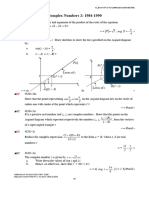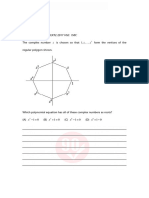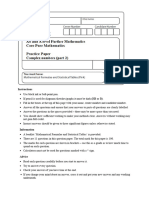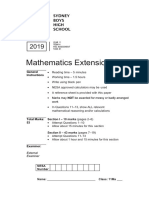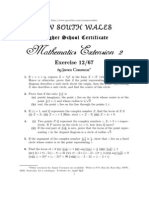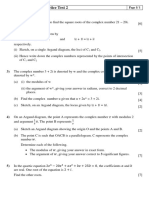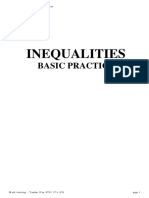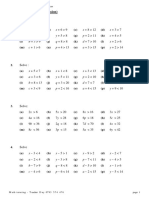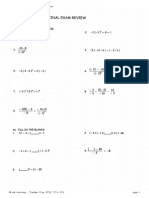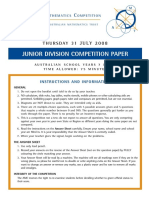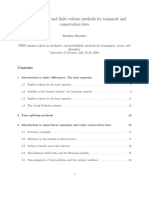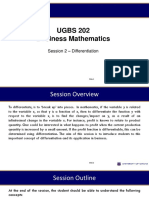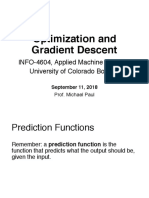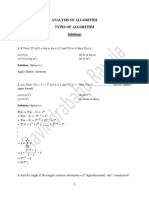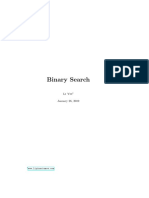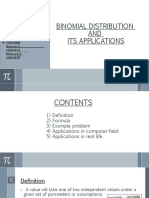0% found this document useful (0 votes)
72 views17 pagesComplex Numbers Part Questions - Answers
The document contains a series of mathematical problems related to complex numbers and their loci in the Argand diagram. Each question involves finding Cartesian equations, sketching loci, and determining properties such as centers and radii of circles. The problems require algebraic manipulation and geometric reasoning to solve inequalities and equations involving complex numbers.
Uploaded by
Duy Nguyen Le QuangCopyright
© © All Rights Reserved
We take content rights seriously. If you suspect this is your content, claim it here.
Available Formats
Download as PDF, TXT or read online on Scribd
0% found this document useful (0 votes)
72 views17 pagesComplex Numbers Part Questions - Answers
The document contains a series of mathematical problems related to complex numbers and their loci in the Argand diagram. Each question involves finding Cartesian equations, sketching loci, and determining properties such as centers and radii of circles. The problems require algebraic manipulation and geometric reasoning to solve inequalities and equations involving complex numbers.
Uploaded by
Duy Nguyen Le QuangCopyright
© © All Rights Reserved
We take content rights seriously. If you suspect this is your content, claim it here.
Available Formats
Download as PDF, TXT or read online on Scribd
/ 17


















